There has been a large increase in herd size on dairy farms over the past number of years since the abolition of quotas.
Average herd size is now running over 100 cows, whereas it was closer to 40 cows in the mid-2000s.
Farmers have increased cows through extending the milking block, either by designating more ground at home for cows or through purchasing neighbouring farms.
Typically, the farmyard is close to the dwelling house and a public road as small farmyards increased in size gradually through the generations.
Now, with our extended milking blocks and our farmyards on the periphery of the farm, we are asking cows to walk further and further each day.
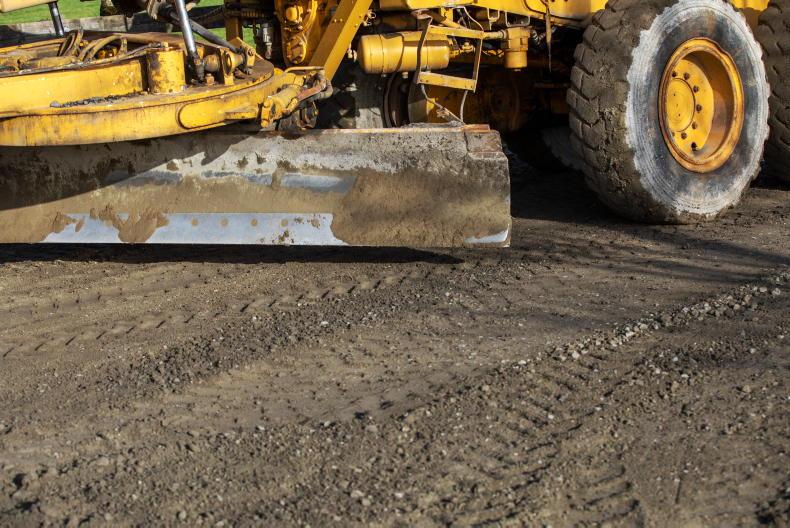
Roads are cambered from the centre or from one side of the road to the other to remove rainwater to help prevent water accumulating and freezing causing damage to the concrete.\ Claire Nash
Farmers have therefore taking greater care in the surface their cows are walking on to both improve hoof health and to maintain cow flow to and from the parlour.
In recognition of this, Oliver Conroy has invested heavily in specialised machinery to rejuvenate gravel roads in a way not seen in Ireland before.
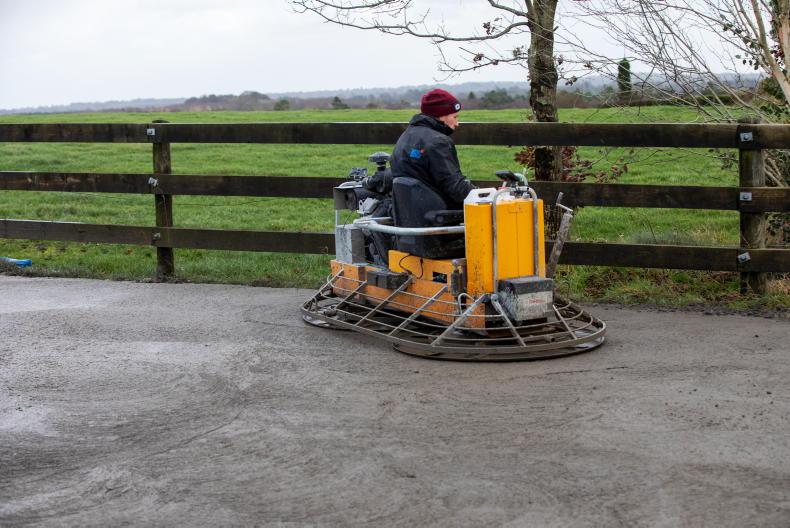
The final stage is to finish the concrete with a power float, with a grip lift in the concrete for animal and machinery safety.\ Claire Nash
Using the existing road material, Oliver and his crew mix cement and water at specific ratios to create a fully concrete road to the depth of the existing road. This comes at a fraction of the cost and time it would take to install it through pouring ready-mix concrete.
The stages
Jonny Moore, who works alongside Oliver Conroy and John Fogarty, talked me through the process. “There is no part of the job that’s more important than the other. Each one has to be done correctly for the whole thing to work well.’’
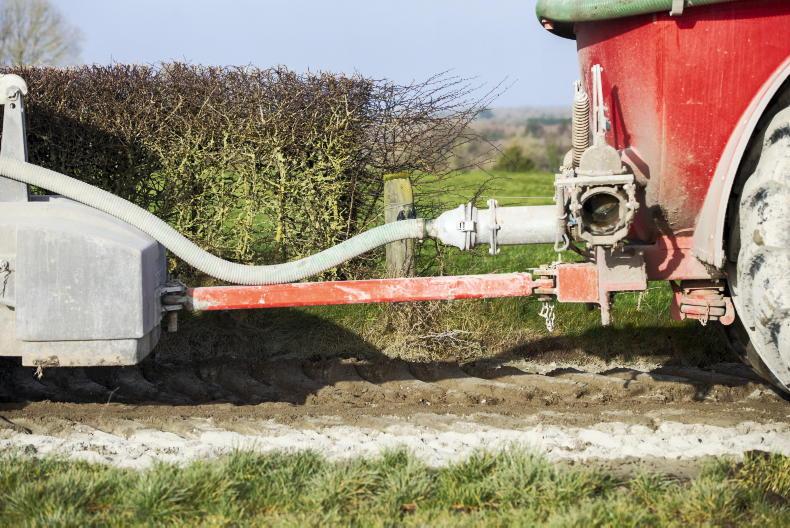
The tractor and tanker are pushed along by the Fendt 939 to keep the speed the same.\ Claire Nash
The farmer will have any shoulders along the edge of the road or grass verges in the middle cleaned off, although the first job the crew will do is run a grader across the road which will remove lighter materials.
“We will camber the roadway as required; either from the centre out to each side or if there’s a drain, we will camber the roadway away from it and direct runoff into the field.
“The next step is the cement. On a pre-inspection, the crew will have assessed the width and depth of the roads, with the works being done on a metre cubed basis.
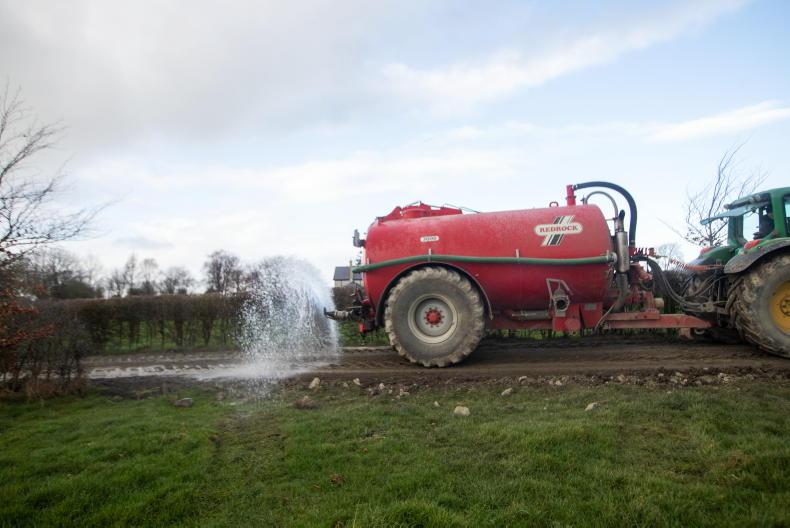
Water is sprayed on the surface before finishing with the power float.\ Claire Nash
“Cement will then be spread using a machine similar to a lime spreader that will accurately spread the cement on the surface of the road through an in-cab computer, working off a figure of 7.5% of the road material.
“Between 7% and 8% is the sweet spot,’’ explained Jonny. “At that volume of cement, we are getting concrete strengths of 25N at seven days, with this indicating a 28-day strength of 30N.’’

Prior to finishing, the roadway receives a pass of a vibrating roller to remove air pockets and bring the fat of the concrete to the surface for finishing.\ Claire Nash
The main crushing and mixing of the road then takes place.
A tractor and tanker are linked in tandem with the tractor kitted out with the crusher drum.
The tractor hitched to the 3,000-gallon tanker is in neutral, being pushed along by a Fendt 939 with the crusher drum hitched to the three-point linkage behind.
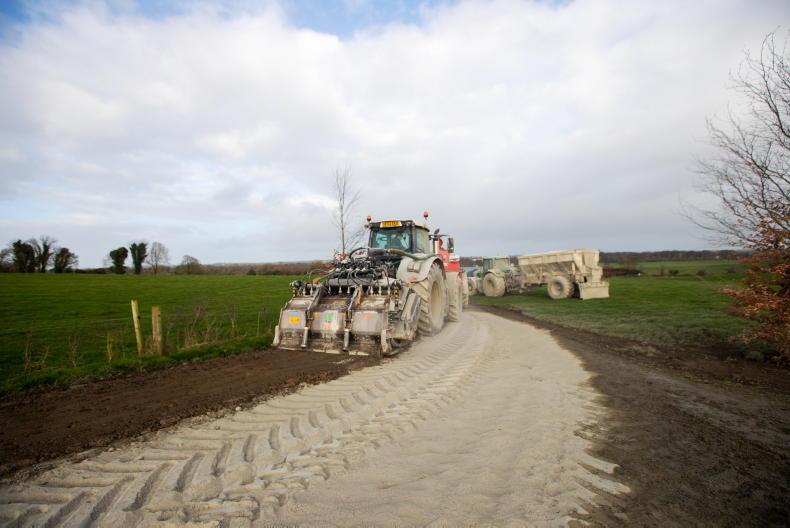
Cement powder is pre laid at a rate of 7.5% of the total road material. \ Claire Nash
A pipe runs from the tanker through to the crusher drum, where a pump draws water from the tanker, typically at a rate of 200l/min.
The first stage of the crusher drum breaks down the material that is in the road.
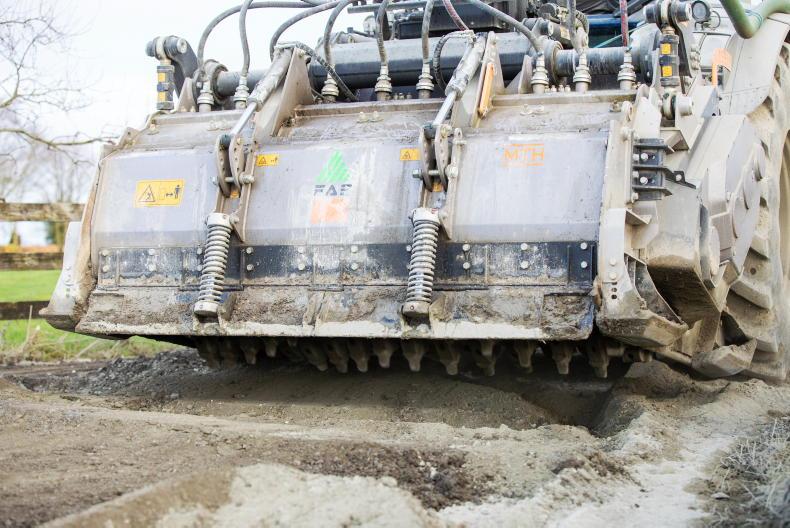
The German manufactured crusher drum is capable of crushing football-sized stones and weighs 8.5 tonne. \ Claire Nash
Finer material passes through the drum, with larger material and rock broken down to a similar size to 8-0-4. “It can take stones up to the size of a football, even sheet rock. We can blend it into a concrete yard by crushing the concrete through the drum,’’ explains Jonny.
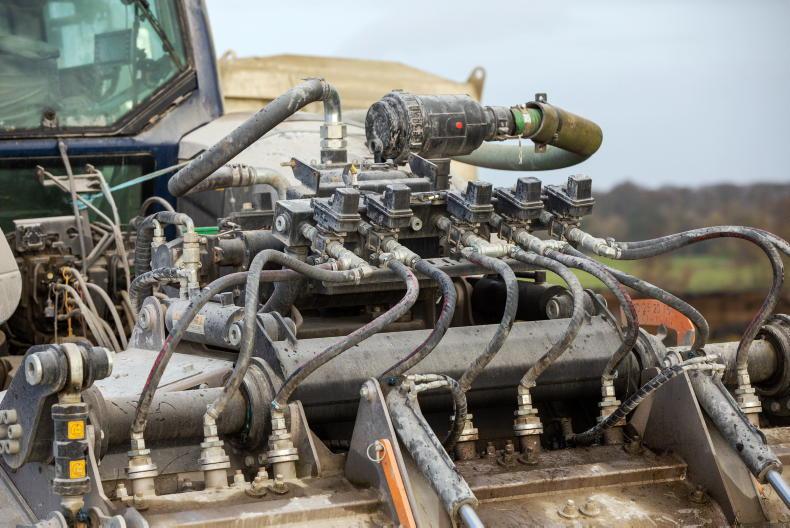
The crusher drum is a heavier duty version of what is typically used to recycle tarmac roads and is capable of crushing sheet rock and existing concrete. \ Claire Nash
The second phase of the drum then mixes the pre-deposited cement with the crushed material and water from the tanker, with the result being a concrete of similar consistency to lean mix passing out through the rear.
The crusher drum is a heavier-duty model to what would normally be used to recycle tar roadways.
Weighing 8.5t, the only tractor capable of lifting it was the firm’s Fendt 939 with a 3.5t weight for ballast at the front. It will complete a 2.5m pass at a speed of 0.1km/h-0.2km/h up to 0.4km/h. 
The three man crew are capable of completing 250-300m of roadways per day with very little manual labour involved.\ Claire Nash
Where roadways are wider than 2.5m and less than 5m, water jets of the drum can be switched off to allow narrower strips to be completed.
A grader then runs across the road to fill any dishes or level out any humps or ridges and to add a camber to remove water.
The crew then give the road two passes of a roller – the first roll to compact the concrete down and the second to bring up the fat in the concrete for finishing.
The final stage of the recycling is to wet down the top of the concrete and finish with a power float.
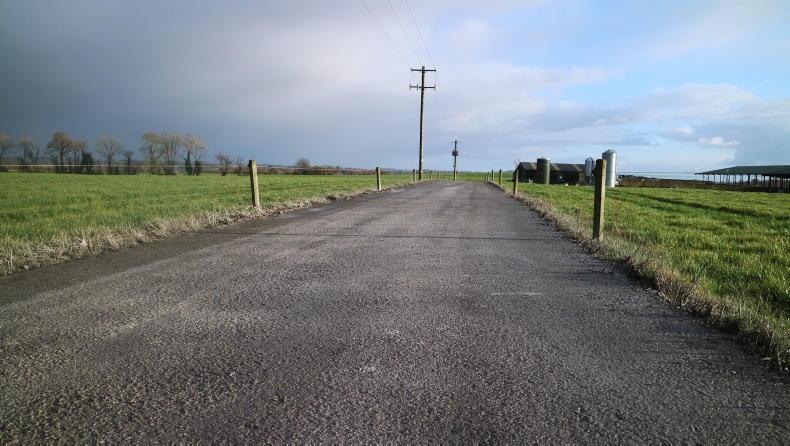
The finished product after 48 hours' curing.
“We can do a glass finish similar to what would be seen in warehouses or garages, but for cows walking on it and machinery in frosty weather we go with a rougher finish, similar to a brush finish,’’ Jonny says.
The concrete is then left to cure. Jonny recommends that no traffic use the road for at least seven days, with heavy machinery even longer than this.
Pricing is on a metre squared basis, with roadway depth and length taken into account. Costs for the completed job, including labour and materials, is €9.50 to €10.50/m².
“We generally try to plan to get two to three farmers in an area due to the need to move machinery about. The three of us here can complete 250m to 300m of roadway per day.
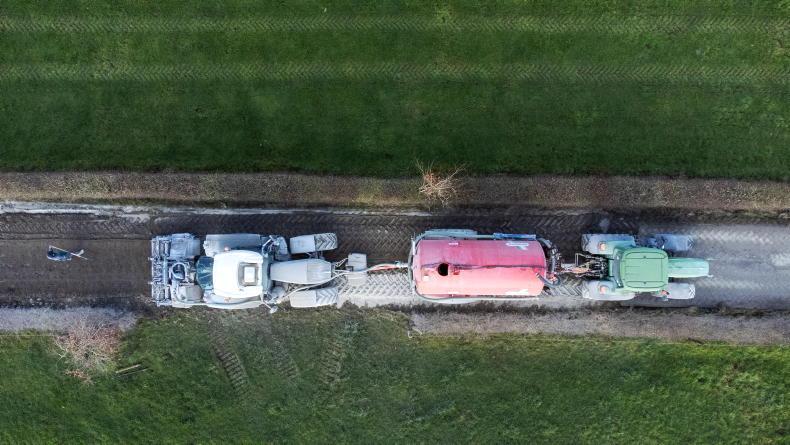
The top lid of the vacuum tank is left open, with a pump on the crusher drum pulling water from the tank at a computer controlled rate.\ Claire Nash
“Overall, it works out significantly cheaper and is completed in a much quicker timeframe than if a farmer was to use ready-mix concrete, all the while recycling the material the farmer already has,’’ Jonny says.
There has been a large increase in herd size on dairy farms over the past number of years since the abolition of quotas.
Average herd size is now running over 100 cows, whereas it was closer to 40 cows in the mid-2000s.
Farmers have increased cows through extending the milking block, either by designating more ground at home for cows or through purchasing neighbouring farms.
Typically, the farmyard is close to the dwelling house and a public road as small farmyards increased in size gradually through the generations.
Now, with our extended milking blocks and our farmyards on the periphery of the farm, we are asking cows to walk further and further each day.

Roads are cambered from the centre or from one side of the road to the other to remove rainwater to help prevent water accumulating and freezing causing damage to the concrete.\ Claire Nash
Farmers have therefore taking greater care in the surface their cows are walking on to both improve hoof health and to maintain cow flow to and from the parlour.
In recognition of this, Oliver Conroy has invested heavily in specialised machinery to rejuvenate gravel roads in a way not seen in Ireland before.

The final stage is to finish the concrete with a power float, with a grip lift in the concrete for animal and machinery safety.\ Claire Nash
Using the existing road material, Oliver and his crew mix cement and water at specific ratios to create a fully concrete road to the depth of the existing road. This comes at a fraction of the cost and time it would take to install it through pouring ready-mix concrete.
The stages
Jonny Moore, who works alongside Oliver Conroy and John Fogarty, talked me through the process. “There is no part of the job that’s more important than the other. Each one has to be done correctly for the whole thing to work well.’’

The tractor and tanker are pushed along by the Fendt 939 to keep the speed the same.\ Claire Nash
The farmer will have any shoulders along the edge of the road or grass verges in the middle cleaned off, although the first job the crew will do is run a grader across the road which will remove lighter materials.
“We will camber the roadway as required; either from the centre out to each side or if there’s a drain, we will camber the roadway away from it and direct runoff into the field.
“The next step is the cement. On a pre-inspection, the crew will have assessed the width and depth of the roads, with the works being done on a metre cubed basis.

Water is sprayed on the surface before finishing with the power float.\ Claire Nash
“Cement will then be spread using a machine similar to a lime spreader that will accurately spread the cement on the surface of the road through an in-cab computer, working off a figure of 7.5% of the road material.
“Between 7% and 8% is the sweet spot,’’ explained Jonny. “At that volume of cement, we are getting concrete strengths of 25N at seven days, with this indicating a 28-day strength of 30N.’’

Prior to finishing, the roadway receives a pass of a vibrating roller to remove air pockets and bring the fat of the concrete to the surface for finishing.\ Claire Nash
The main crushing and mixing of the road then takes place.
A tractor and tanker are linked in tandem with the tractor kitted out with the crusher drum.
The tractor hitched to the 3,000-gallon tanker is in neutral, being pushed along by a Fendt 939 with the crusher drum hitched to the three-point linkage behind.

Cement powder is pre laid at a rate of 7.5% of the total road material. \ Claire Nash
A pipe runs from the tanker through to the crusher drum, where a pump draws water from the tanker, typically at a rate of 200l/min.
The first stage of the crusher drum breaks down the material that is in the road.

The German manufactured crusher drum is capable of crushing football-sized stones and weighs 8.5 tonne. \ Claire Nash
Finer material passes through the drum, with larger material and rock broken down to a similar size to 8-0-4. “It can take stones up to the size of a football, even sheet rock. We can blend it into a concrete yard by crushing the concrete through the drum,’’ explains Jonny.

The crusher drum is a heavier duty version of what is typically used to recycle tarmac roads and is capable of crushing sheet rock and existing concrete. \ Claire Nash
The second phase of the drum then mixes the pre-deposited cement with the crushed material and water from the tanker, with the result being a concrete of similar consistency to lean mix passing out through the rear.
The crusher drum is a heavier-duty model to what would normally be used to recycle tar roadways.
Weighing 8.5t, the only tractor capable of lifting it was the firm’s Fendt 939 with a 3.5t weight for ballast at the front. It will complete a 2.5m pass at a speed of 0.1km/h-0.2km/h up to 0.4km/h. 
The three man crew are capable of completing 250-300m of roadways per day with very little manual labour involved.\ Claire Nash
Where roadways are wider than 2.5m and less than 5m, water jets of the drum can be switched off to allow narrower strips to be completed.
A grader then runs across the road to fill any dishes or level out any humps or ridges and to add a camber to remove water.
The crew then give the road two passes of a roller – the first roll to compact the concrete down and the second to bring up the fat in the concrete for finishing.
The final stage of the recycling is to wet down the top of the concrete and finish with a power float.

The finished product after 48 hours' curing.
“We can do a glass finish similar to what would be seen in warehouses or garages, but for cows walking on it and machinery in frosty weather we go with a rougher finish, similar to a brush finish,’’ Jonny says.
The concrete is then left to cure. Jonny recommends that no traffic use the road for at least seven days, with heavy machinery even longer than this.
Pricing is on a metre squared basis, with roadway depth and length taken into account. Costs for the completed job, including labour and materials, is €9.50 to €10.50/m².
“We generally try to plan to get two to three farmers in an area due to the need to move machinery about. The three of us here can complete 250m to 300m of roadway per day.

The top lid of the vacuum tank is left open, with a pump on the crusher drum pulling water from the tank at a computer controlled rate.\ Claire Nash
“Overall, it works out significantly cheaper and is completed in a much quicker timeframe than if a farmer was to use ready-mix concrete, all the while recycling the material the farmer already has,’’ Jonny says.
















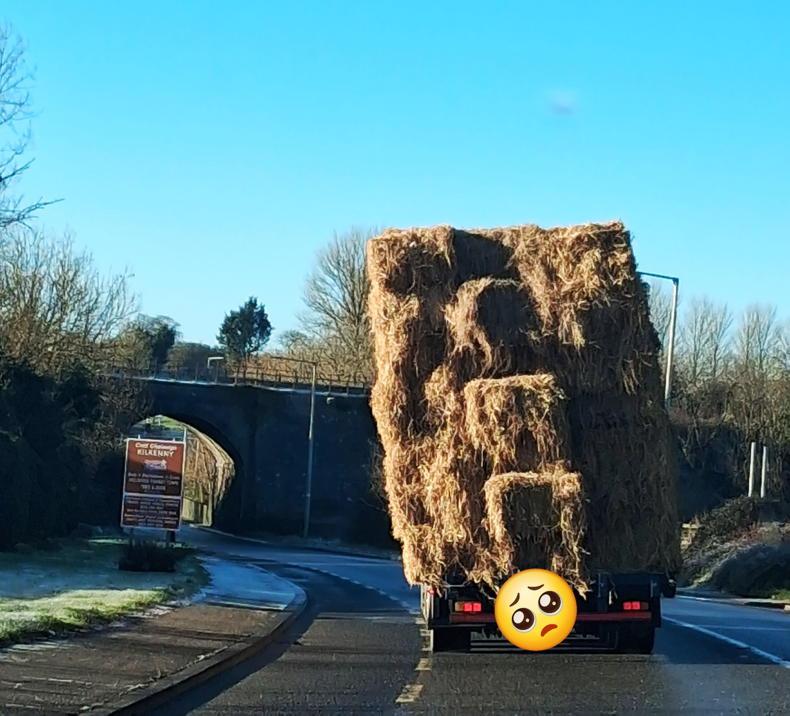
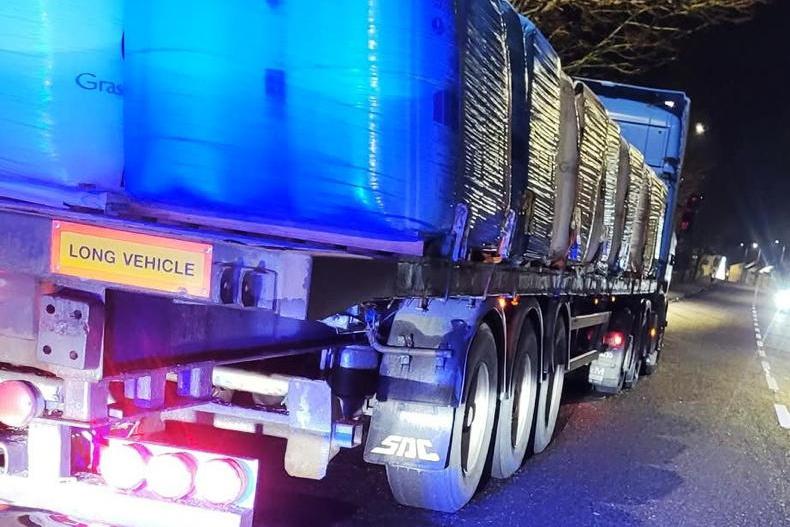

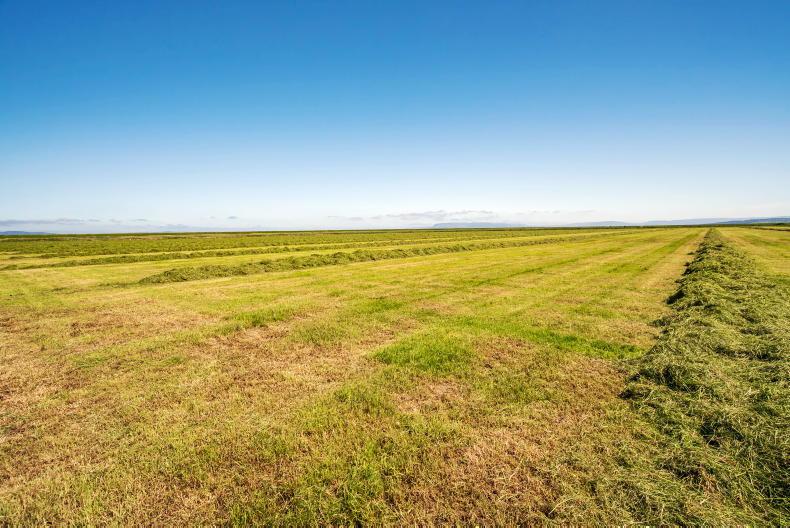
SHARING OPTIONS